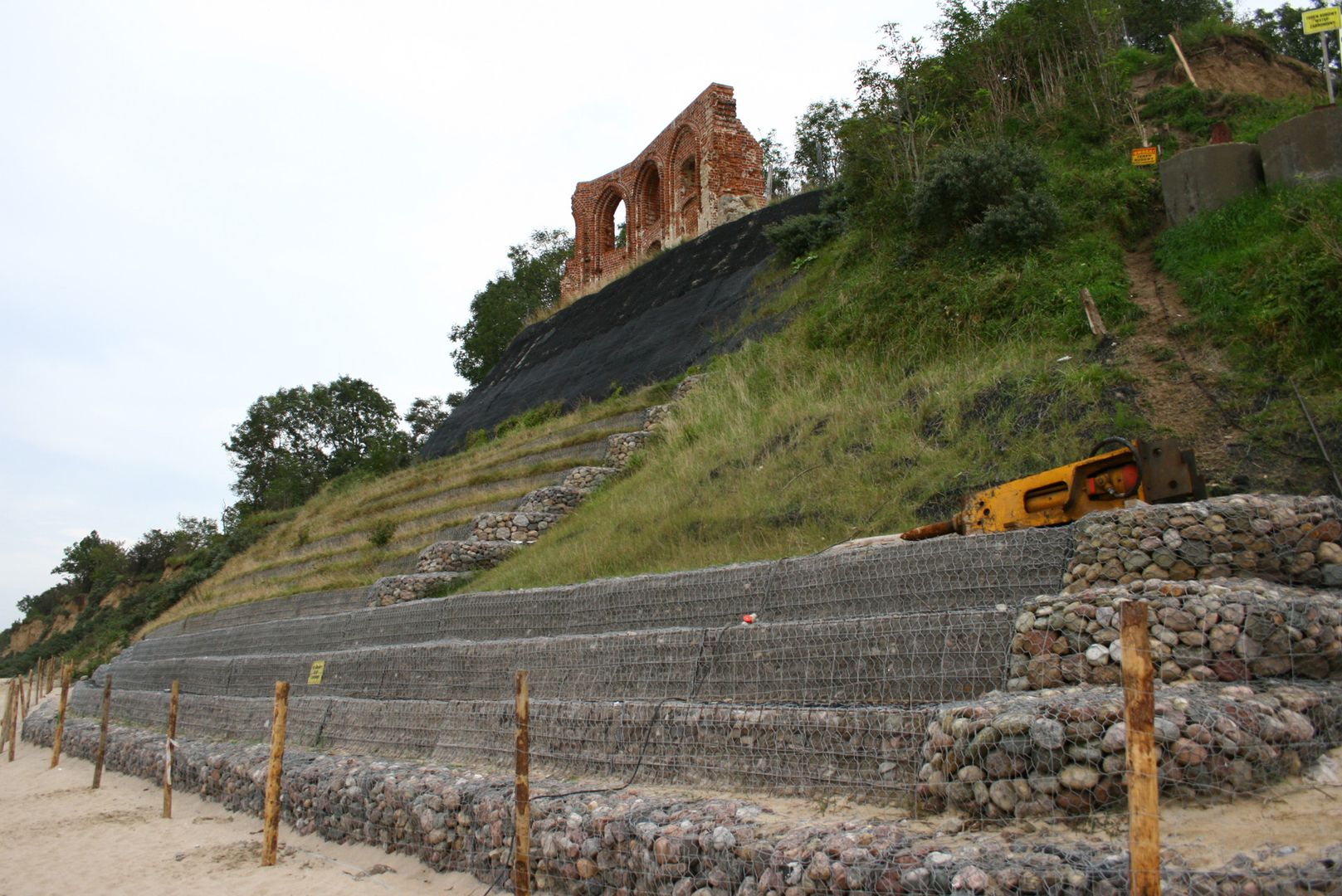St. Nicholas Church in Trzęsac
7.39

Overview
St. Nicholas Church in Trzęsacz is a historic structure, originally wooden and later masonry, which was one of the most magnificent rural churches of Western Pomerania. Built in 1124 from wood, it was transformed into a Gothic-style brick church in the 14th-15th centuries. Adapted to the Evangelical faith after the Reformation, the church underwent multiple renovations, and in 1658 it was enriched with rich Renaissance and Baroque furnishings, including pews, a pulpit, and altars. Due to coastal erosion, the shoreline gradually approached the church, leading to the progressive destruction of the structure; the first efforts to protect the temple began as early as the 18th century. Throughout its history, the church suffered extensive damage, and ultimately only the southern wall remained as ruins, still perched on the cliff. The church was renowned for its impressive architecture, including a pentagonal chancel and hand-molded bricks. Preserved elements of the furnishings, such as the Baroque altar and Renaissance stalls, were relocated to other churches and museums. Legends associated with the church tell of the sea goddess, Zielenica, whose fearsome father, the Baltic Sea, was said to claim parts of the church, taking them into the sea—a legendary motif reflecting the community's relationship with the sea, which constantly threatened the structure. Efforts to secure the church ruins began in the 21st century, introducing modern conservation methods. Thus, the church in Trzęsacz is not only an interesting architectural object but also the result of a long-standing interaction between humans and nature, which has shaped its history.
Location
2025 Wizytor | All Rights Reserved